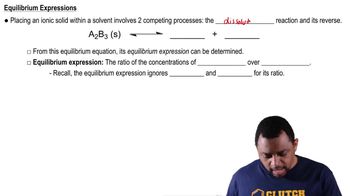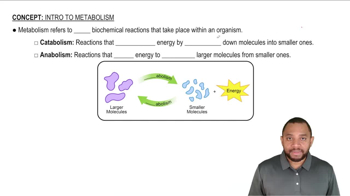Outline the conditions that direct pyruvate toward the following:
d. Glucose synthesis (gluconeogenesis)
In what tissues or organisms is each pathway present?
 Verified step by step guidance
Verified step by step guidance Verified video answer for a similar problem:
Verified video answer for a similar problem:



 2:4m
2:4mMaster Gluconeogenesis Concept 1 with a bite sized video explanation from Jules
Start learning